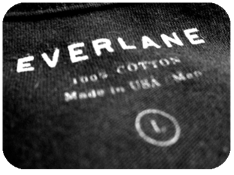 For many of today’s conscientious consumers, it’s not enough for a product to be simply affordable and effective. Environmentally minded diners, for instance, prefer to know as much about the origins of their food as possible. That’s why so many modern restaurants make sure the names of their organic and artisanal suppliers appear as prominently on menus as the dishes. Now the trend is expanding out of the culinary world and into retail as more and more clothing companies use transparency about their products’ origins and pricing as a selling point.
For many of today’s conscientious consumers, it’s not enough for a product to be simply affordable and effective. Environmentally minded diners, for instance, prefer to know as much about the origins of their food as possible. That’s why so many modern restaurants make sure the names of their organic and artisanal suppliers appear as prominently on menus as the dishes. Now the trend is expanding out of the culinary world and into retail as more and more clothing companies use transparency about their products’ origins and pricing as a selling point.
The idea is to redefine the way the public thinks about garment production. After all, sweatshop labor has been a ghastly feature of the business since the Industrial Revolution. In more recent years, big brands like Nike spent much of the 1990s being taken to task for their dependence on exploited foreign labor. Now the Beaverton-based company discloses the name and address of every factory it uses. Some small firms go even further, such as the Belgian fashion label Honest By. Along with citing its manufacturers the same way as Nike, the company also painstakingly details the origins of each material used in a garment as well as the item’s total cost breakdown and markup.
This idea isn’t exclusive to Europe, either. A San Francisco company called Everlane includes the same cost breakdown as Honest By and regularly provides customers with social media tours of its production facilities. However, the company doesn’t include specifics on their factories’ locations so as not to encourage competitors to move on their turf. Everlane’s savvy use of supply chains allows them to mark up their clothing by about 220 percent as opposed to the 500 to 800 percent increase levied by most of the industry. These astronomical upticks in cost are no longer a mystery to many shoppers, and companies like Everlane use that information to gain even more trust from their customers.
Questions:
- Why is transparency about product origin important to today’s consumers?
- Will more companies follow suit and disclose product cost breakdowns?
Source: Laura Neilson & Meenal Mistry, “Feel Good Fashion: The New Black,” The Wall Street Journal, August 16, 2013. Photo courtesy of John Hersechell.
